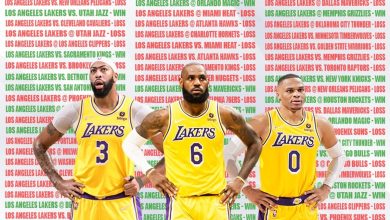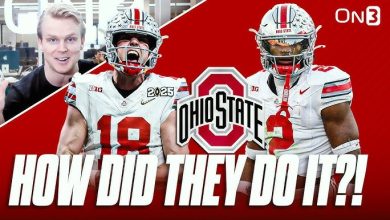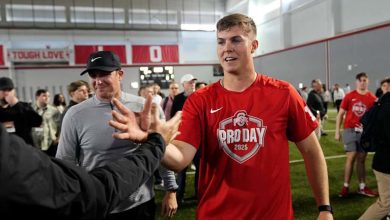Quinn Ewers’ agent, Ron Slavin, revealed the quarterback’s NFL Draft slide was due to concerns about consistency and lingering questions regarding his long-term durability.

When the 2025 NFL Draft began, many analysts and fans expected former Texas Longhorns quarterback Quinn Ewers to hear his name called much earlier than he did. Regarded as one of the more talented passers in the class, Ewers possessed many of the tools that typically excite NFL scouts—arm strength, mobility, and a high football IQ. However, as the first round came and went, and then the second round too, it became apparent that teams had concerns about the young quarterback. Ewers eventually came off the board later than anticipated, leading many to ask: what happened?
Ron Slavin, Ewers’ agent, provided some insight into the surprising slide. According to Slavin, NFL teams raised persistent concerns about two specific areas of Ewers’ game: his consistency and his long-term durability. These issues, Slavin noted, became sticking points in pre-draft evaluations and ultimately led to Ewers dropping further down draft boards than expected.
The Background: A Promising but Uneven College Career
To understand the draft slide, one must first examine Ewers’ college career, which was filled with both flashes of brilliance and stretches of underperformance. Originally the No. 1 overall recruit in the 2021 high school class, Ewers famously reclassified and enrolled early at Ohio State before transferring to Texas. At Texas, Ewers displayed moments of elite-level quarterbacking—his performance against Alabama in 2023, for example, showed poise, arm talent, and the ability to rise to the occasion.
However, Ewers also struggled with injuries and inconsistency. In multiple games, his timing was off, and decision-making faltered under pressure. There were games where his mechanics looked pristine and others where he appeared out of sync. These inconsistencies, which were heavily scrutinized during the pre-draft process, became red flags for NFL evaluators.
Agent’s Explanation: “Durability and Consistency”
In a candid interview following the draft, Ron Slavin addressed the elephant in the room: why did his client, once thought to be a potential first-round pick, slide?
“Teams love Quinn’s arm talent and what he can become,” Slavin said. “But there were lingering concerns about two things—how consistent he can be week to week, and whether his body will hold up to the rigors of an NFL season.”
Slavin didn’t shy away from the criticism. Instead, he acknowledged that the draft process is designed to uncover every possible concern about a prospect and that Ewers’ injury history was a legitimate talking point. Ewers missed games due to shoulder issues and had stretches of diminished performance coming off those injuries. NFL front offices, Slavin said, weren’t just evaluating his highlights—they were analyzing every throw, every hit taken, and every missed read.
“Consistency isn’t just about stats,” Slavin explained. “It’s about the trust a team can have in you to make the same read and the same throw every time. With Quinn, the talent is undeniable. But teams want to see that level of performance every week—not just in big moments.”
Injury History as a Draft Deterrent
Ewers’ injury history became a central narrative leading into the draft. During his college career, he missed significant time due to injuries, most notably to his throwing shoulder. While none of these injuries were catastrophic, the cumulative effect raised eyebrows.
NFL teams invest heavily in quarterbacks—not just financially, but in terms of their entire offensive infrastructure. A quarterback who might miss games each year due to wear-and-tear or chronic issues becomes a risky proposition. Slavin admitted that several teams requested detailed medical reports on Ewers and that some clubs felt uneasy about how his body would hold up over a 17-game NFL season.
“There was no hiding it,” Slavin said. “We had to answer every question, provide every scan and every rehab report. Some teams were comfortable, others weren’t. And that’s part of the process.”
The Mental and Mechanical Questions
In addition to the durability concerns, questions about Ewers’ mechanical consistency also hurt his draft stock. Though he possesses a naturally quick and powerful release, his footwork and throwing mechanics were inconsistent across his college tape. At times, he relied too heavily on arm strength, resulting in errant throws or passes that lacked touch.
Scouts often referred to Ewers as a “boom-or-bust” prospect—capable of making spectacular throws but also vulnerable to basic mistakes. This inconsistency in his fundamentals was viewed as a developmental hurdle. Teams wondered whether they were getting a refined starter or a long-term project.
“Quarterbacks in the NFL have to be surgical,” one anonymous scout reportedly said. “Quinn has the tools, but you can’t survive in this league on arm talent alone. Footwork, timing, anticipation—that’s what separates the good from the great.”
Slavin acknowledged that Ewers would need to continue refining those parts of his game. “He knows there’s work to be done,” he said. “But he’s committed to it. This draft slide might be the best thing that ever happened to him. It lit a fire.”
The Pre-Draft Process: Mixed Reviews from Teams
During the pre-draft process, Ewers had private workouts, team interviews, and meetings with several quarterback-needy franchises. According to Slavin, feedback was mixed. Some teams were impressed by his intelligence and presence during interviews. Others reportedly came away still unsure about his leadership qualities and ability to command a locker room from day one.
In a league that demands maturity and rapid adaptation from rookie quarterbacks, even small uncertainties can lead to draft hesitation. Slavin believed that a handful of teams had Ewers graded as a second- or third-rounder from the beginning, not because of raw talent, but because of developmental projection.
“The top of the draft is for players who can start right now,” Slavin said. “Some teams weren’t ready to put that kind of responsibility on Quinn immediately. But others saw the upside, and thankfully, he ended up with a team that believes in his future.”
A Chip on the Shoulder
For Ewers, the experience of sliding in the draft was undoubtedly frustrating. Having once been hailed as a potential franchise quarterback, to fall to the later rounds meant being passed over by dozens of teams. According to Slavin, Ewers was disappointed but remained focused and determined throughout the process.
“He handled it like a pro,” Slavin said. “Would he have liked to go in the first round? Of course. But at the end of the day, you don’t get to pick where you go. What you can control is how you respond—and Quinn is ready to prove people wrong.”
Sources close to Ewers say the quarterback has already begun to use the draft slide as motivation. He’s reportedly working with private quarterback coaches to fine-tune his mechanics and improve his footwork. There’s also been an emphasis on building durability—strength training, flexibility work, and preventative care have become a daily priority.
The New Opportunity
Ewers now enters the NFL as a talented but overlooked prospect, the kind of player who could thrive in the right system with time to develop. Some analysts have drawn comparisons to quarterbacks like Geno Smith and Jordan Love—players who took time to find their footing in the league but eventually proved their doubters wrong.
Slavin is optimistic that Ewers has landed in a good situation. While he didn’t name the team publicly during his comments, he indicated that Ewers would have a chance to grow behind a veteran quarterback while learning a complex offensive system. That kind of environment, he argued, is ideal for someone with Ewers’ ceiling.
“He’s not walking into a situation where he has to save a franchise in Week 1,” Slavin said. “He gets to sit, learn, and when the time comes, he’ll be ready.”
Looking Ahead: Long-Term Potential
Ultimately, Quinn Ewers’ draft slide may not define his career—it may shape it. Many quarterbacks have experienced draft day disappointments only to rise to prominence later. With the right coaching, development, and support, Ewers still has a chance to become a starting NFL quarterback.
Slavin believes his client has what it takes to prove everyone wrong.
“He’s got every tool you could want in a quarterback,” Slavin said. “Now, he’s got something even more powerful—motivation.”









